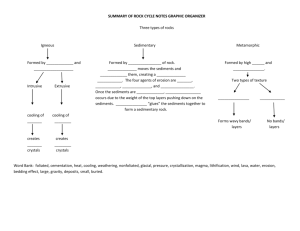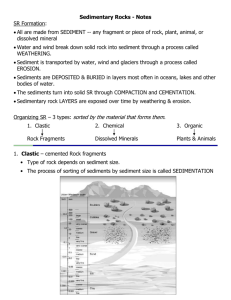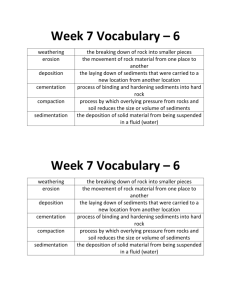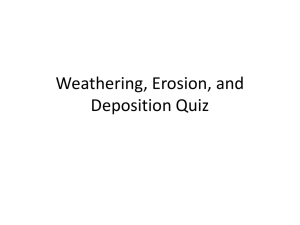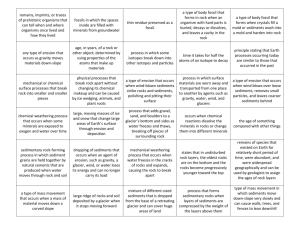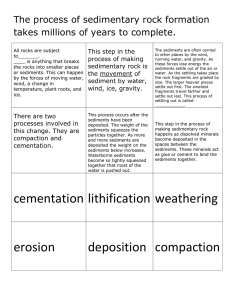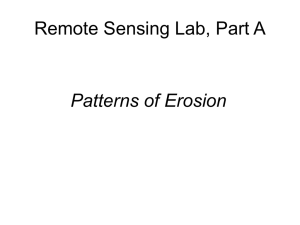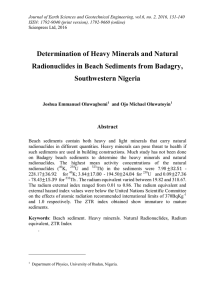Sedimentary Rocks
advertisement
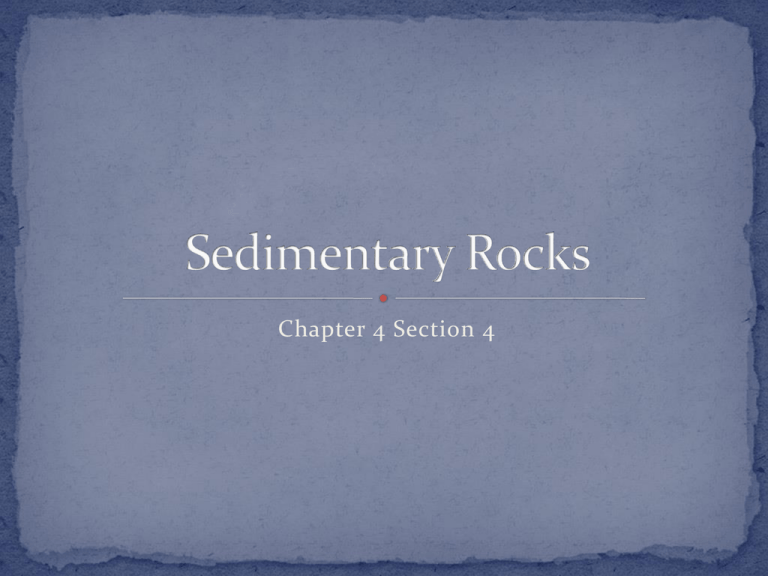
Chapter 4 Section 4 Most rock is igneous but it is below ground 75 % of exposed rock is Sedimentary Sediments Rock fragments Mineral grains Bits of shell and organic matter Sediments pressed and cemented together or Minerals form from solution Often form in layers Older layers are at the bottom because they were deposited first Sometimes the older layers are disrupted and moved upward. Type dependent on the composition of the sediments They are also classified based on they way they formed. 3 types Detrital Chemical Organic Detrital- (dih Tri tul) Made from broken parts of other rocks Weathering- wind and water break a rock both chemically and mechanically Erosion-the movement of weathered rock from place to place. Compaction- erosion moves sediments to a new place where they are deposited. Layer upon layer of sediment builds and is pushed together by pressure Cementation- water moves through soil and rock and picks up minerals. This solution of water and minerals acts like a glue to hold the sediments together Dissolved minerals come out of solution Minerals collect when seas or lakes evaporate Limestone is an example Halite or rock salt is another example Remember much of the Earth was covered with water for millions of years. Rocks made from the remains of once living things Chalk is made of microscopic remnants from shells Coal is formed when the dead remains of plants are buried in swamps Microorganisms chemical change the plants and the sediments are compacted for millions of years
